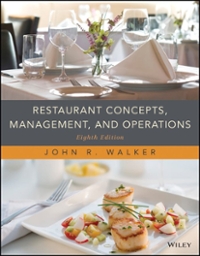Question
Three decades ago, Howard Schultz got the idea of bringing a European-style coffeehouse to America. He believed that people needed to slow down, to smell
Three decades ago, Howard Schultz got the idea of bringing a European-style coffeehouse to America. He believed that people needed to slow down, to "smell the coffee" and enjoy life a little more. The result was Starbucks. This coffeehouse doesn't sell just coffee, it sells the Starbucks Experience - one that enriches customers' lives. The smells, the hissing steam, the comfy chairs - all contribute to the Starbucks ambience.
Starbucks gives customers what it calls a "third place" - away from home and away from work - a place for conversation and a sense of community. As a result, Starbucks has transformed coffee from a commodity to a $4 splurge, and the company's sales and profits have risen like steam off a mug of hot java. Today, with more than 21,000 stores in 65 countries, Starbucks is the "premier roaster and retailer of specialty coffee in the world".
To take the Starbucks Experience even further, they have recently announced plans to design and build a completely original coffee Roastery and Tasting room, to be connected to an actual Starbucks retail outlet. This will allow customers to enjoy their favourite brew in the comfort of an outlet, while viewing the actual coffee roasting and brewing process - "behind the curtain".
There's an element of nostalgia here too: the roastery is to be located in Seattle, just "nine blocks away from the first ever Starbucks store". Schultz goes so far as to describe this new experience as the "Willy Wonka of coffee."
(Adapted from Starbucks Roastery and Tasting Room, 2015)
Question:
The steps in the development of a retail strategy are interdependent, and usually go from general to quite specific plans.
Advise the Starbucks management on the steps of the development of a retail strategy to include, but not limited to, these elements:
a) Situation analysis;
b) Objectives;
c) Target market;
d) Strategy;
e) Daily activities and tactics; and
f) Control.
*Assumptions of retail knowledge can be applied.
Step by Step Solution
There are 3 Steps involved in it
Step: 1

Get Instant Access to Expert-Tailored Solutions
See step-by-step solutions with expert insights and AI powered tools for academic success
Step: 2

Step: 3

Ace Your Homework with AI
Get the answers you need in no time with our AI-driven, step-by-step assistance
Get Started


